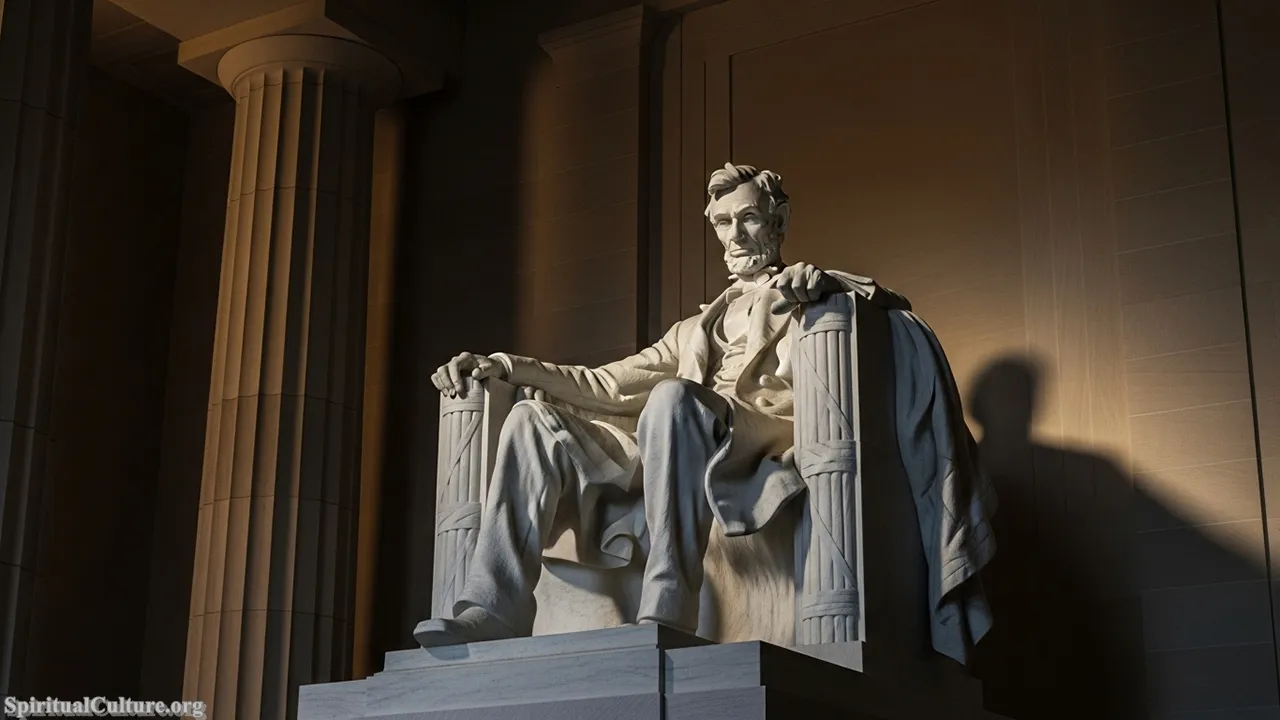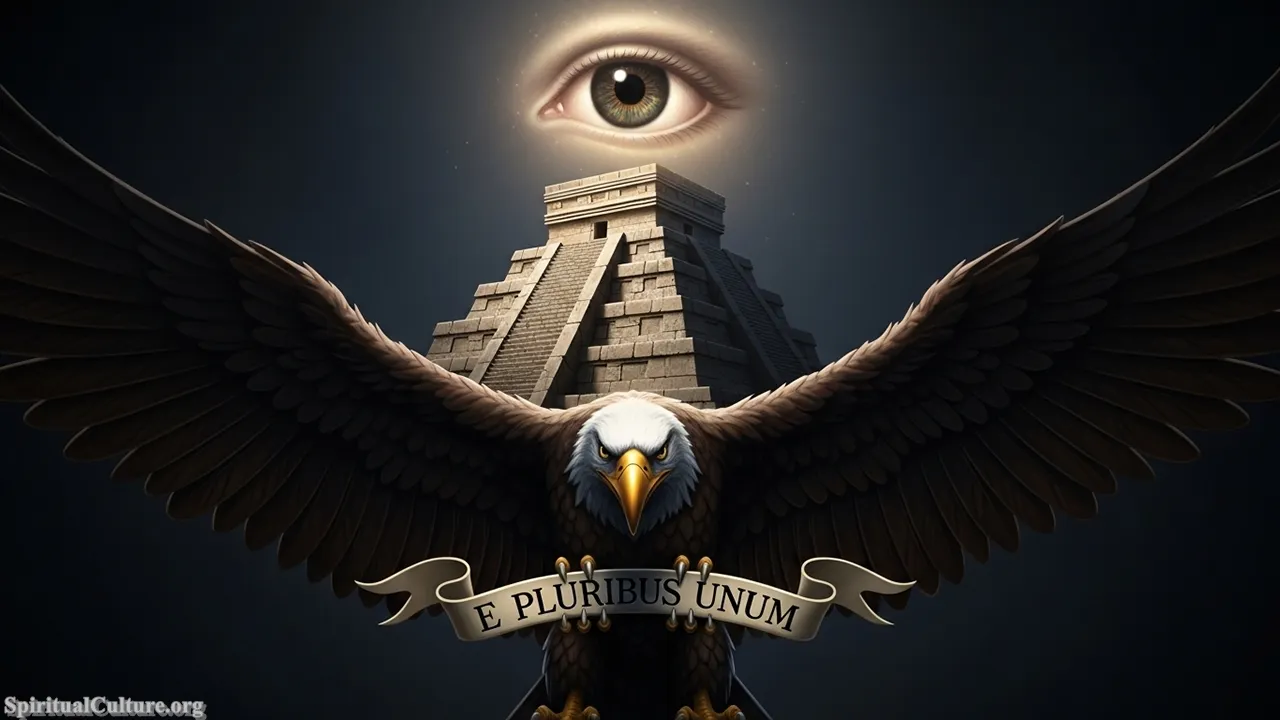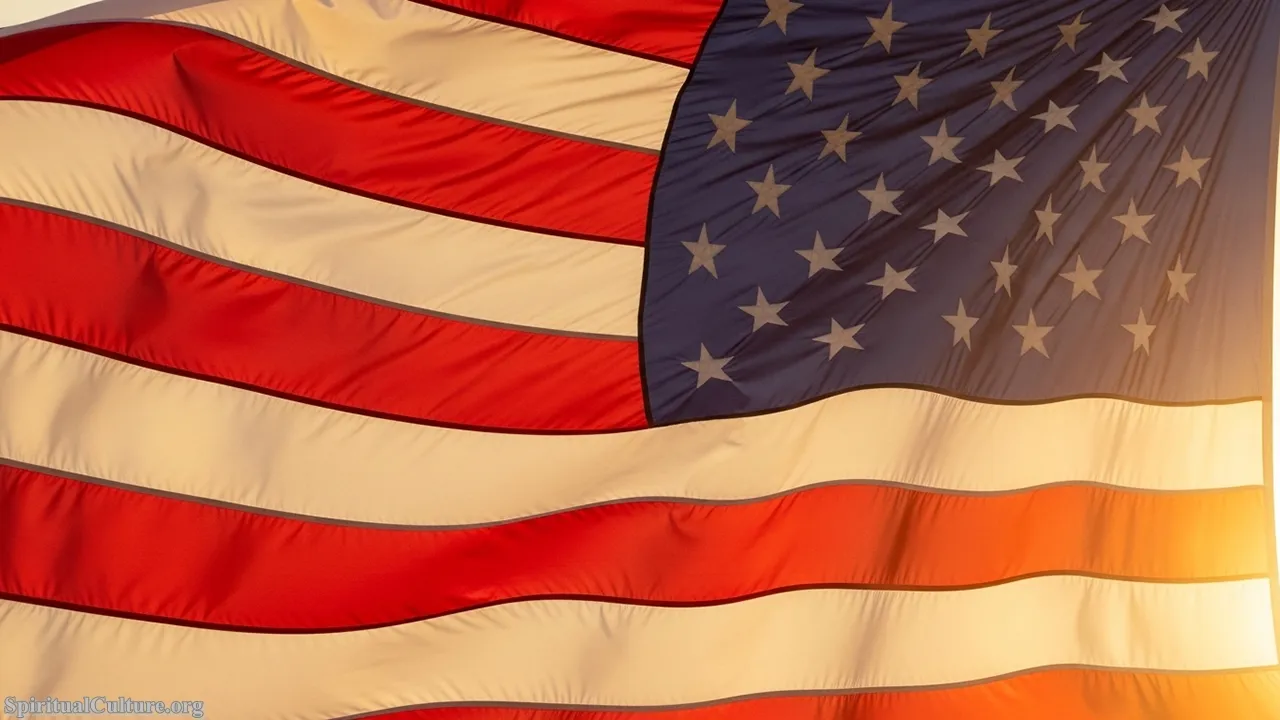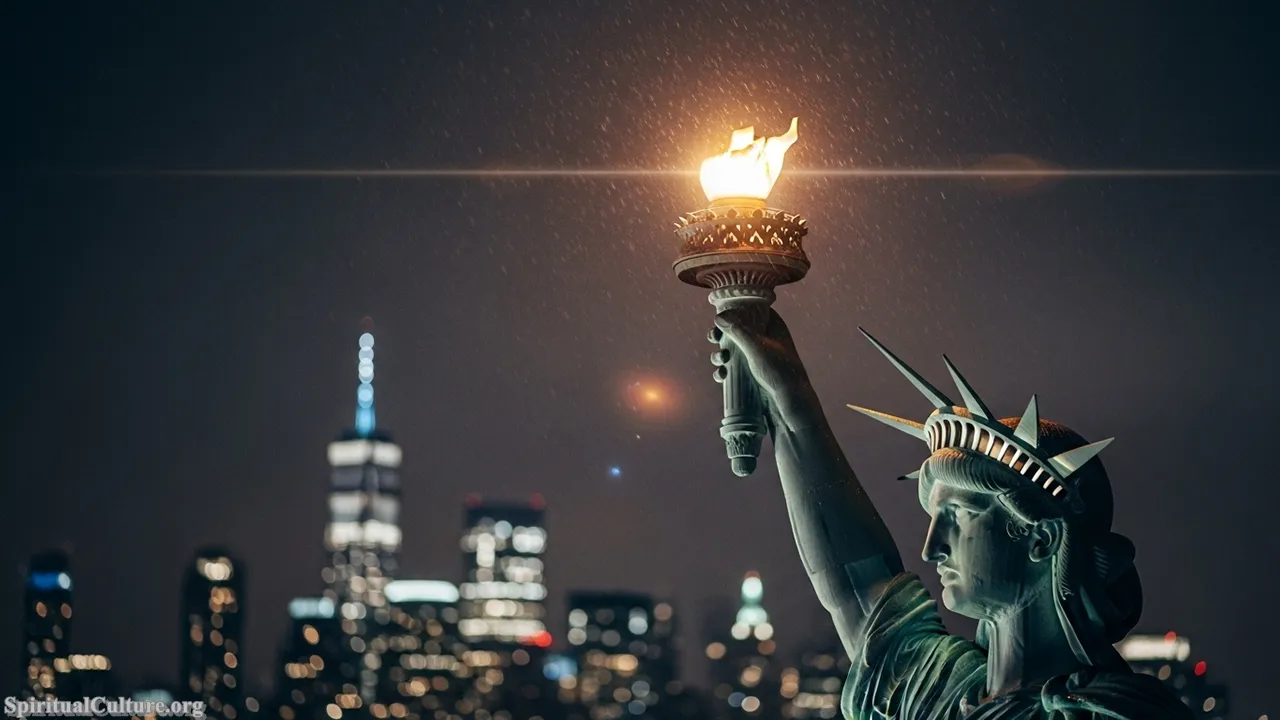The study of national symbols is a profound way to understand a nation’s collective consciousness and its underlying spiritual values. In a nation as diverse and historically complex as the United States, cultural symbols go beyond mere patriotic emblems; they represent a shared narrative of hope, struggle, and ideals—from foundational promises to ongoing social movements. As of the Current Time of Writing, these symbols continue to be re-examined, celebrated, and debated, reflecting the dynamic nature of American identity.
At Spiritual Culture, we present a definitive Top 10 list that transcends simple popularity, ranking these symbols based on their historical depth, global recognition, and most importantly, their demonstrable spiritual or philosophical impact on the populace and the world. This list is constructed on an evidence-based cultural criteria, emphasizing the symbols that speak most clearly to the core concepts of liberty, opportunity, and unity for both its citizens and those viewing the nation from afar.
Table of the Top 10 Most Recognized American Cultural Symbols
| Rank | Cultural Symbol | Primary Philosophical/Spiritual Value | Founding/Adoption Date | Global Recognition Index (High-Low) |
|---|---|---|---|---|
| 1 | The Statue of Liberty | Liberty, Enlightenment, Hope for the Oppressed | 1886 | High |
| 2 | The U.S. Flag (Stars & Stripes) | Union, Sacrifice, Vigilance, Perseverance | 1777 (Current 50-Star: 1960) | High |
| 3 | The Bald Eagle | Strength, Freedom, Sovereignty | 1782 (National Emblem) | High |
| 4 | The Liberty Bell | Proclamation of Liberty (Jubilee), Abolition | 1751 (Commissioned) | Medium-High |
| 5 | The Great Seal (E Pluribus Unum) | Unity from Diversity, Providence | 1782 (Adopted) | Medium |
| 6 | The American Dream | Opportunity, Upward Mobility, The Pursuit of Happiness | Mid-20th Century (Popularized) | High |
| 7 | Thanksgiving (The Feast) | Gratitude, Harvest, Reconciliation/Survival | 1863 (Federal Holiday) | Medium |
| 8 | The Lincoln Memorial | Emancipation, Unity, Endurance in Moral Law | 1922 (Dedicated) | Medium |
| 9 | The Dreamcatcher | Protection, Positive Energy, Indigenous Heritage | Ancient (Popularized 20th Century) | Medium |
| 10 | Mount Rushmore | Founding Principles, National Identity, Presidential Legacy | 1941 (Completed) | Medium |
Top 10. Mount Rushmore
The colossal carving of Mount Rushmore in South Dakota’s Black Hills represents a monument to the first 150 years of American history, immortalizing the visages of Presidents Washington, Jefferson, Roosevelt, and Lincoln. Its cultural weight derives from its sheer scale and the enduring legacy of the men chosen to represent the nation’s birth, growth, development, and preservation. Completed in 1941, it symbolizes the audacious spirit of American engineering and the idea that human will can reshape the natural world to honor historical greatness.

The spiritual impact of Mount Rushmore rests in its function as a kind of modern secular pilgrimage site, where citizens and visitors can reflect on the trajectory of the nation through the eyes of its leaders. Each figure embodies a distinct philosophical pillar: Washington (Founding), Jefferson (Expansion/Democracy), Roosevelt (Development/Preservation), and Lincoln (Preservation/Equality). Standing before these granite figures compels a deep contemplation of the principles upon which the republic was founded and the immense sacrifices required to maintain its union and moral clarity.
For Spiritual Culture, the preservation value of this symbol is complex, acknowledging the controversies surrounding its location on sacred Lakota land while simultaneously recognizing its place as an indelible image of American identity and the ambition of its democratic experiment. It serves as a visual meditation on the responsibility of leadership and the enduring ideal of a nation conceived in liberty. The monument challenges the observer to reconcile the vision of the founders with the realities of the present.
Cultural/Spiritual Highlights
- Location: Black Hills, South Dakota (part of the Paha Sapa, sacred to the Lakota Sioux).
- Symbolism: Audacity, national ambition, and the enduring principles of the American Presidency.
- Figures Represented: Birth (Washington), Growth (Jefferson), Development (Roosevelt), Preservation (Lincoln).
Top 9. The Dreamcatcher
Originating from Native American cultures, particularly the Ojibwe (Chippewa), the Dreamcatcher has evolved from a tribal talisman into a widely recognized spiritual symbol of American indigenous heritage and mysticism. Traditionally hung above a bed, the hoop with a woven web was meant to catch bad dreams in the net while allowing good dreams to pass through the central opening and slide down the feathers to the sleeper. As of the Current Time of Writing, its widespread adoption symbolizes a growing appreciation for—and sometimes appropriation of—pre-colonial spiritual practices.

The spiritual impact of the Dreamcatcher lies in its embodiment of protection, hope, and the acknowledgment of an interconnected world where spiritual forces influence the physical realm. It is a daily reminder of the power of intention and the need to filter negative energy to maintain inner harmony. In a modern American context, it has become a symbol of seeking tranquility and a deeper, more rooted connection to the earth and ancient wisdom.
This artifact carries a profound preservation value for Spiritual Culture because it represents the tenacity of Native American spiritual traditions surviving centuries of oppression. While its commercialization is debated, its enduring presence in American culture is a testament to the inescapable spiritual current that runs beneath the nation’s political identity. It teaches a moral lesson about seeking spiritual guidance and protecting the innocence of the mind during rest.
Cultural/Spiritual Highlights
- Origin: Primarily Ojibwe (Chippewa) culture.
- Meaning: Protection from negative dreams; filtering the good from the bad in life.
- Cultural Significance: Represents the enduring wisdom and spiritual presence of Indigenous peoples.
Top 8. The Lincoln Memorial
Dedicated in 1922, the Lincoln Memorial is not merely a statue of the 16th President; it is a sacred space designed as a modern Greek temple to house the spirit of American unity and moral law. Situated at the end of the National Mall, Abraham Lincoln sits as the eternal, reflective guardian of the nation he preserved, with his second inaugural address and Gettysburg Address inscribed on the walls. As of the Current Time of Writing, it remains the essential backdrop for movements seeking social justice, including Martin Luther King Jr.’s “I Have a Dream” speech.

The spiritual impact of this symbol is unparalleled among American presidential monuments. Lincoln, through his actions, consecrated the Civil War as a struggle for a “new birth of freedom,” investing the Union with a moral, almost salvific, purpose. The memorial is a pilgrimage site where visitors confront the heavy cost of that freedom and the ideal of government “of the people, by the people, for the people.” Its solemn, reflective atmosphere encourages introspection on the moral duties of citizenship and the perpetual struggle for true equality.
Spiritual Culture sees the preservation of the Lincoln Memorial as critical, not for the marble itself, but for its role as a spiritual and civic altar. It represents the pinnacle of America’s moral reckoning, where the foundational promises of the Declaration of Independence were finally, violently, brought into alignment with the nation’s laws. The memorial teaches that genuine political strength is rooted in profound moral courage and a commitment to justice for all inhabitants of the land.
Cultural/Spiritual Highlights
- Form: Designed as a Greek Doric temple, symbolizing eternal, democratic ideals.
- Primary Value: Moral perseverance, national unity, and the fulfillment of the promise of equality.
- Historical Role: The site of critical civil rights and protest movements.
Top 7. Thanksgiving (The Feast)
While often reduced to a meal and a holiday, Thanksgiving as a cultural symbol represents the complex, enduring American ritual of gratitude, survival, and communal reconciliation. Originating from colonial-era harvest festivals—most famously the 1621 event between the Pilgrims and the Wampanoag—it was formally established as a federal holiday in 1863 by President Lincoln during the Civil War. As of the Current Time of Writing, the holiday retains its central function: to pause the nation’s relentless pace and focus on blessings, family, and home.

The spiritual impact of this feast is rooted in the universal human need for ritualized gratitude and the recognition of dependence on a higher provision and community support. It encourages a philosophical pause for reflection on both personal and national bounty, creating a sense of national cohesion that transcends political or religious divides. The day is a potent symbol of resilience, acknowledging the difficult journey of survival and the importance of shared resources.
For Spiritual Culture, the preservation of Thanksgiving’s original spirit—one of intercultural engagement, however flawed and mythologized—is the moral lesson it offers. It challenges Americans to embody the spirit of thanks by addressing the historical injustices that underpin the contemporary celebration, moving from a superficial feast to a deeper, more mindful recognition of communal history and mutual obligation. It is a symbol of perennial human optimism in the face of uncertainty.
Cultural/Spiritual Highlights
- Central Value: Gratitude, communal feasting, and pause for spiritual reflection.
- Formal Adoption: 1863, by President Lincoln, as a unifying force during the Civil War.
- Ritual Element: A shared national narrative of survival and harvest.
Top 6. The American Dream
The “American Dream” is perhaps the most spiritually potent and globally exported American symbol, even though it is not a physical object but a socio-philosophical construct. Popularized in the mid-20th century, it is the deeply held belief that anyone, regardless of where they were born or what class they were born into, can attain their own version of success through hard work, determination, and initiative. This concept is a direct spiritual descendant of the Declaration’s assertion of “the pursuit of happiness.”

The spiritual impact of the American Dream is profound because it gives meaning and purpose to the individual struggle for a better life. It is an internal, motivating symbol of hope and aspiration, essentially an article of faith in the possibility of self-reinvention and upward mobility. It operates as a secular covenant, promising that effort will lead to reward, sustaining millions of immigrants who come to the country seeking a spiritual and economic rebirth.
Spiritual Culture recognizes this symbol’s immense preservation value, as it is the very engine of American cultural fluidity and ambition. However, we also note the moral lesson found in its current re-evaluation: the gap between the promise and the reality highlights the need for a national commitment to universal access to opportunity. The dream’s true power lies not in its guarantee of wealth, but in its profound affirmation of the inherent worth and potential of every individual.
Cultural/Spiritual Highlights
- Nature: A philosophical concept rather than a physical object.
- Core Value: Opportunity, upward mobility, and the pursuit of happiness (a natural right).
- Global Impact: The central aspirational ideal of immigration and self-reinvention.
Top 5. The Great Seal (E Pluribus Unum)
The Great Seal of the United States, adopted in 1782, is a potent symbolic artifact that goes far beyond official government use. Its mottoes and imagery distill the core spiritual and political intentions of the Founding Fathers. The primary motto, E Pluribus Unum (“Out of Many, One”), is a profound statement of spiritual unity, affirming that the nation’s strength is derived from the convergence of diverse states and peoples into a cohesive whole. Its two sides contain a complex array of thirteen symbols, including the unfinished pyramid and the Eye of Providence (Annuit Coeptis—”Providence Favors Our Undertakings”).

The spiritual impact is found in its invocation of both human endeavor and divine blessing. The phrase Annuit Coeptis embeds the idea that the American experiment is protected and favored by Providence, suggesting a divinely sanctioned purpose to the nation’s existence. The unfinished pyramid symbolizes the work of building a perfect union as an ongoing, perpetual commitment, teaching that the pursuit of a moral nation is a continuous, never-ending process.
For Spiritual Culture, the Great Seal offers a reflective moral lesson: that true national power is based on unity (E Pluribus Unum) and a humble recognition that success is not purely self-made but a blend of human action and transcendent guidance. Its preservation of ancient mystical and political symbolism speaks to the founders’ awareness of the higher, philosophical principles required to govern a free people.
Cultural/Spiritual Highlights
- Mottoes: E Pluribus Unum (“Out of Many, One”) and Annuit Coeptis (“Providence Favors Our Undertakings”).
- Key Symbols: The Bald Eagle, Shield, Olive Branch, Arrows, and the Eye of Providence.
- Significance: Official declaration of the nation’s spiritual and political philosophy.
Top 4. The Liberty Bell
Commissioned in 1751, the Pennsylvania State House bell—later renamed the Liberty Bell—is one of the most resonant symbols of freedom. Its enduring significance rests in its famous inscription, taken from the Bible (Leviticus 25:10): “Proclaim Liberty Throughout All the Land Unto All the Inhabitants Thereof.” Though its role in the actual reading of the Declaration of Independence is debated, its adoption by 19th-century abolitionists cemented its place as a symbol of universal, non-negotiable freedom.

The spiritual impact of the Liberty Bell is intrinsically linked to the biblical concept of the Jubilee—the command to return property and set slaves free every fifty years. By citing this verse, the Bell became a powerful moral instrument, teaching that true liberty is comprehensive and must extend to all inhabitants. The famous crack, far from being a flaw, is viewed through a spiritual lens as a symbol of the nation’s imperfect, often fractured, but persistent pursuit of its highest ideals. It is a symbol of brokenness that ultimately compels repair.
Spiritual Culture honors the preservation of the Bell, not for its metal, but for the moral urgency of its inscription. It stands in Philadelphia as a tangible challenge to the nation, an object that physically reminds every American that the promise of liberty is a constant call to action. The Bell’s sound, or lack thereof, symbolizes the perpetual need for society to ring out the truth against all forms of bondage and injustice.
Cultural/Spiritual Highlights
- Inscription: “Proclaim Liberty Throughout All the Land Unto All the Inhabitants Thereof” (Leviticus 25:10).
- Key History: Adopted by abolitionists in the 1830s as a symbol against slavery.
- Spiritual Teaching: The ideal of the Jubilee and the imperative of universal freedom.
Top 3. The Bald Eagle
Chosen in 1782 for the Great Seal, the Bald Eagle became the national bird of the United States, instantly symbolizing qualities the nascent republic aspired to embody. Its image is an unmistakable cultural export, representing a potent blend of strength, courage, and the soaring freedom of the skies. In a more ancient, spiritual context, the eagle was already revered by many Native American tribes as a messenger between the physical world and the spiritual realm, linking the current national symbol to deeper, continental traditions.

The spiritual impact of the Bald Eagle is tied to its untamed nature. It is a symbol that suggests freedom is not granted by government but is an inherent, powerful, and fiercely protected condition. It teaches a philosophical lesson about sovereignty—the right to rule oneself—and the necessary vigilance required to maintain liberty, as it often appears prepared for battle (clutching arrows) but preferring peace (holding an olive branch).
Spiritual Culture places the Bald Eagle highly due to its visceral, non-political resonance. It taps into primal human reverence for power and independence found in the natural world. Its enduring image on currency, seals, and monuments preserves the idea that the best form of freedom is one that is earned through strength and defended with courage, remaining an eternal beacon of self-reliance and national character.
Cultural/Spiritual Highlights
- Adoption Date: 1782, chosen for the Great Seal of the United States.
- Symbolism: Strength, power, courage, and untamed natural freedom.
- Native American Context: Revered as a messenger and symbol of spiritual connection.
Top 2. The U.S. Flag (Stars & Stripes)
The American flag, or the “Stars & Stripes,” is arguably the most globally recognized visual symbol of the United States. Adopted in 1777 and updated numerous times to reach its current 50-star configuration in 1960, the flag’s design is a complex code of national identity. The 50 white stars on a blue field represent the union of the states, while the 13 red and white stripes represent the original colonies. Its very structure is a dynamic representation of unity that honors both history and evolution.

The spiritual impact of the flag is immense, acting as a secular sacred object that evokes powerful emotional responses, from national pride and identity to fervent protest. The colors themselves carry philosophical weight: Red for valor and bravery, White for purity and innocence, and Blue for vigilance, perseverance, and justice. When flown, the flag is a silent sermon on the values of civic life, teaching the concepts of duty, sacrifice, and the commitment to a shared, common ideal embodied in the Union.
For Spiritual Culture, the flag’s preservation value lies in its continuous evolution. Each star added is a chapter in the nation’s unfolding story, reminding citizens that the Union is not a static entity but a work in progress. It is a unifying artifact that demands respect for the immense sacrifice—the ‘bravery and valor’ of the red stripes—that has been poured into the preservation of the democratic experiment, making it a constant spiritual reminder of civic responsibility.
Cultural/Spiritual Highlights
- Symbolism: Union of the States (Stars), Original Colonies (Stripes).
- Color Meaning: Red (Valor), White (Purity), Blue (Vigilance/Justice).
- Spiritual Teaching: Sacrifice, civic duty, and the preservation of the Union.
Top 1. The Statue of Liberty
Standing as the definitive American cultural symbol, the Statue of Liberty (formally Liberty Enlightening the World) is the primary global emblem of freedom, opportunity, and enlightenment. Dedicated in 1886 as a gift from the people of France, this monumental figure of Libertas, the Roman goddess of liberty, has been the physical and spiritual gateway for millions of immigrants arriving at Ellis Island. Her torch, held high, is not merely a light but an eternal beacon of hope.

The spiritual impact of the Statue of Liberty is the purest distillation of the nation’s aspirational values. She embodies the ideal of **Enlightenment**—the idea that rational liberty can and must be spread to all people—and the unconditional **Hope** offered to the oppressed of the world, as immortalized in Emma Lazarus’s poem, “The New Colossus.” Holding the tablet of law (inscribed July IV, MDCCLXXVI), she teaches that true freedom must be governed by a commitment to lawful order.
Spiritual Culture ranks Lady Liberty as number one because her value is both historical and transcendental. She is an enduring global monument to the human spirit’s desire for liberation, challenging the world to live up to the promise she represents. Her silent watch over the harbor preserves the sacred cultural narrative of welcome, reminding all generations that the nation’s spiritual well-being is tied directly to its role as a sanctuary for those “yearning to breathe free.”
Cultural/Spiritual Highlights
- Formal Name: Liberty Enlightening the World.
- Core Value: Global Liberty, Enlightenment, and Hope for immigrants/refugees.
- Key Feature: The torch, symbolizing the light of reason and freedom.
Conclusion
The symbols of American culture—from the tangible bronze of the Liberty Bell to the aspirational ideal of the American Dream—collectively form a complex, dynamic spiritual narrative. They are not static historical markers, but living emblems that reflect the nation’s ongoing moral dialogue and its continuous striving to align reality with its foundational principles of liberty and justice for all. As of the Current Time of Writing, these top ten symbols affirm that the American spirit is rooted in resilience, hope, and an unwavering commitment to the idea of a self-governing people. At Spiritual Culture, we celebrate these icons as powerful reminders of humanity’s potential for self-improvement and the enduring global impact of a free society.


